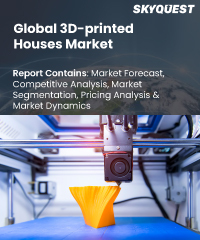
Product ID: SQMIG20G2034

Report ID:
SQMIG20G2034 |
Region:
Global |
Published Date: February, 2024
Pages:
157
|
Tables:
64 |
Figures:
75
Global 3D-printed houses market was still in its early stages and is largely fragmented, with a few players dominating the market. In addition to these key players, there are also many smaller companies and startups operating in the 3D-printed houses market. The market is expected to become increasingly competitive in the coming years as more companies enter the space and as technology continues to evolve. The competitive landscape is likely to be shaped by factors such as technological innovation, pricing strategies, and regulatory compliance, among others. As the market matures, we can expect to see increased collaboration and partnerships between companies, as well as mergers and acquisitions, as players seek to gain a competitive edge in the market.
3D-printed Houses Market Top Player’s Company Profiles
3D-printed Houses Market
Our industry expert will work with you to provide you with customized data in a short amount of time.
REQUEST FREE CUSTOMIZATIONWant to customize this report? This report can be personalized according to your needs. Our analysts and industry experts will work directly with you to understand your requirements and provide you with customized data in a short amount of time. We offer $1000 worth of FREE customization at the time of purchase.

Product ID: SQMIG20G2034